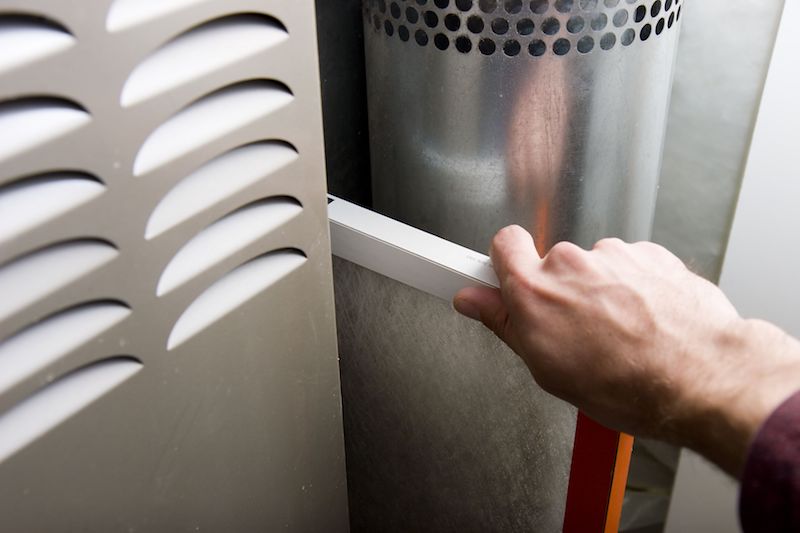
If you’re questioning whether your The Bay Area house has unhealthy indoor air quality (IAQ), it probably does.
We are indoors a lot. In fact, we’re in a building up to 90% of the time, according to the U.S. Environmental Protection Agency. And the air inside homes could be 2–5 times more contaminated than outdoors, which might create long-term health problems.
Most Common Origins of Bad IAQ
We’ve made a list of the most frequent sources of bad IAQ, the issues they make and how you can take care of these indoor air pollutants. If you’re worried about the air inside your residence, we advise consulting with a specialist like Contra Costa Heating & AC about which options are a good fit for your house.
Volatile Organic Compounds
Volatile organic compounds, or VOCs, are vapors leaked by everyday household items.
They’re found in paint and stains along with:
- Furniture
- Carpet
- Building materials
- Cleaning products
- Cosmetics
- Air fresheners
- Candles
When these vapors accumulate in your home, they may irritate your eyes, nose and throat. They may also create headaches and nausea. Regardless of whether your house is in a rural or industrial space, an EPA study found indoor levels of these chemicals can be 2–5 times greater than the air outside.
Always adhere to the manufacturer’s directions when painting or cleaning. Unlatching a window can help fumes dissipate faster.
Air purification systems can also better your air. This system partners with your heating and cooling system to improve indoor air. When hunting for a model, ensure it’s specifically designed to eradicate VOCs.
Dust and Pet Dander
Dust and pet dander can irritate health problems like asthma and allergies, especially when it constantly gets redistributed by your home’s comfort equipment. While you can vacuum more frequently and get an improved air filter, an air filtration system may be a better match.
This solution hooks to your comfort equipment to give mighty filtration. Some kinds offer hospital-level filtration for removing particles and bioaerosols.
Lingering Odors
Newer residences are securely sealed to boost energy efficiency. While this is good for your heating and cooling expenses, it’s not ideal for your IAQ.
Stale odors can stick around for a greater amount of time because your residence is pulling in a smaller amount of fresh air. Because keeping your windows open throughout the year isn’t doable, here are two approaches you can make your indoor air smell fresher.
An air purification system is placed in your HVAC system to neutralize odors before they get released again. Search for one with a carbon filter and the power to wipe out dangerous VOCs. These systems can also help keep your family healthy by eliminating most bacteria and common allergy triggers like pollen and mold spores.
A ventilation system pulls out musty indoor air and substitutes it with fresh outdoor air. There are two kinds of systems (heat recovery and energy recovery), so call our professionals for more information on which solution is right for your home.
Unsteady Humidity
It’s important your home’s humidity stays even. Air that’s too humid can create mold, while dry air can lead to respiratory symptoms.
Our professionals suggest 40–50% for the best comfort. To keep yours even, consider getting a whole-home humidifier or whole-home dehumidifier with your heating and cooling unit.
In place of having to lug a humidifier from room to room, this product delivers consistent humidity throughout your house.
Carbon Monoxide
Carbon monoxide is colorless gas you can’t smell. It occurs when there’s insufficient combustion in fuel-burning units, like gas heating systems, water heaters or fireplaces.
It creates an extreme health risk. In little levels, it can create flu-like symptoms like headaches and nausea. It may be lethal in large amounts.
We recommend yearly furnace maintenance to ensure your unit is working smoothly. This job allows our technicians to pinpoint problems before they begin, including malfunctions that can lead to carbon monoxide leaks.
The best method to keep your house free of carbon monoxide is to put in detectors. These alarms should be on every floor by bedrooms and living rooms.
Enhance Your House’s Air Quality with the Contra Costa Heating & AC Specialists
Aware that your residence has poor air quality but not sure how to enhance it? Or unsure which solution is right for you? Give our kind HVAC professionals a call at 510-916-2218 or contact us online right away. With free estimates and pro support, we’ll help you find the right option for your family and budget.

